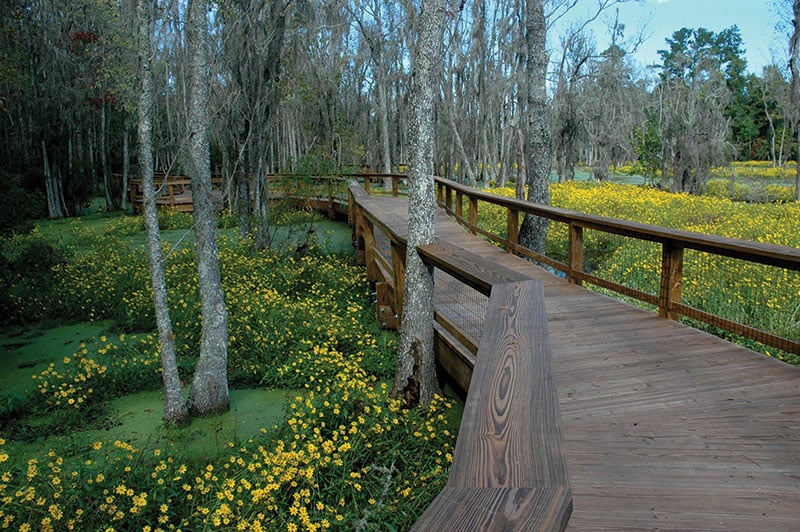Where History and Nature Meet in Natchitoches

Natchitoches is a joy in itself. Louisiana’s oldest city offers historic bed and breakfasts, unique shopping along Front Street and exciting dining options. But drive a few miles south along Cane River, and visitors will discover a unique blending of cultures.
Natchitoches began as a trading post between France, Spain and Native Americans, and in those formative years, many officers and plantation owners entered into varied relationships with enslaved African Americans. French merchant and planter, Claude Thomas Pierre Metoyer, for instance, had 10 children with enslaved Marie Therése Coincoin, but later set her free and gifted her with a yearly allowance and a parcel of land. Her later success in agriculture allowed her to buy her children’s freedom; they too amassed acreage and wealth. Coincoin’s family, along with others of African descent, created the area’s unique Creole community called Isle Brevelle. And many became landowners who owned slaves.
One of Coincoin’s sons, Louis Metoyer, built what was to become one of the finest Louisiana plantations. Years later, his Melrose Plantation would include the African House, the studio and residence of renowned primitive artist Clementine Hunter.
Now a National Historic Landmark, visitors may tour the main house of Melrose and its outbuildings, the African House with its murals by Hunter and Hunter’s own living quarters. The plantation hosts events throughout the year, including its popular arts and crafts festival.
Melrose is just one of the many sites along the Cane River, an actual oxbow lake formed off the neighboring Red River. Louisiana Hwy. 494, a Louisiana Scenic Byway, follows the curving waters of the Cane alongside pecan orchards, fields and ancient live oak trees with numerous historic sites to enjoy along the way. It’s the fall escape into the countryside.
Oakland and Magnolia plantations
Visitors heading out from Natchitoches should start at the Cane River Creole National Historic Park with tours of the raised Creole-style Oakland Plantation home along with its 17 original outbuildings and massive pecan and oak trees. The Magnolia Plantation Complex consists of outbuildings on 18 acres and the last wooden screw-type cotton press in the nation remaining in its original site. Admission to the park is free and includes all 65 historic structures and more than a million artifacts.
The Battle of Bermuda Bridge
In preparation of America possibly entering World War II, the U.S. Army carried out the Louisiana Maneuvers throughout central Louisiana. Approximately 66,000 troops under Gen. Dwight Eisenhower and others were trained around Alexandria and Natchitoches in the years before Pearl Harbor. When two army units were practicing a maneuver along the Cane River, they came under fire when they approached Bermuda Bridge. A convoy ensued, including a howitzer, until the enemy was discovered. Three boys under the age of 12 — Alphonse, Kenneth and Mayo Prud’homme — had bested the soldiers with their carbide-gas toy cannon. The story of three children facing the U.S. Army got national attention and a historical marker shows the spot today.
St. Augustine Catholic Church
Freed slave Nicolas Augustin Metoyer established this mission church in 1829 and named it for the bishop of what is now Algeria. The Roman Catholic Church and cemetery now listed on the National Register of Historic Places is considered the first church built by and for free people of color in Louisiana. Because of its significance to Catholic and Creole history, St. Augustine became a stop on the Louisiana African American Heritage Trail.
Every fall, the church hosts the St. Augustine Creole Festival and Church Fair with tours of the historic church, food and entertainment and family reunions of Creoles living throughout the United States. This year’s event will be Oct. 11-13.
What’s New
The Texas & Pacific Railway Depot served train passengers from 1927 until 1969. But not all passengers were treated equally: African Americans and white travelers used separate bathrooms and waiting rooms.
The Italianate and Spanish Revival depot is one of the last surviving examples of a segregated building in Louisiana, but come this fall, it will become the headquarters and visitor center for the Cane River Creole National Historical Park.
For more information on the depot and park, visit canerivernha.org.
